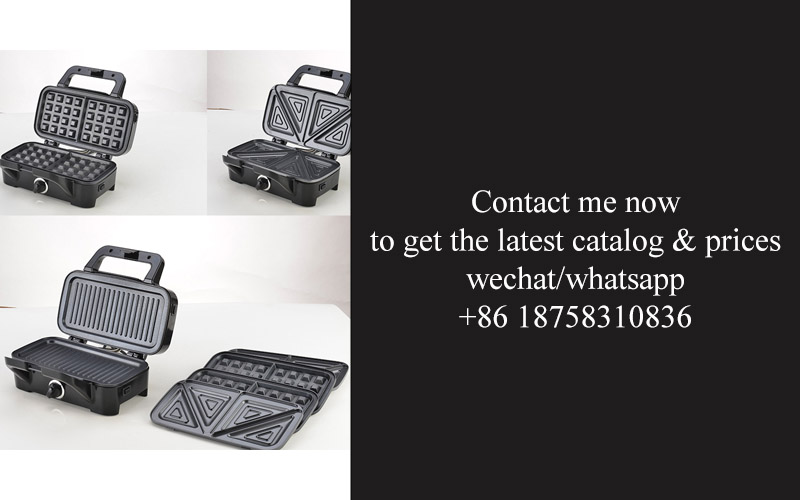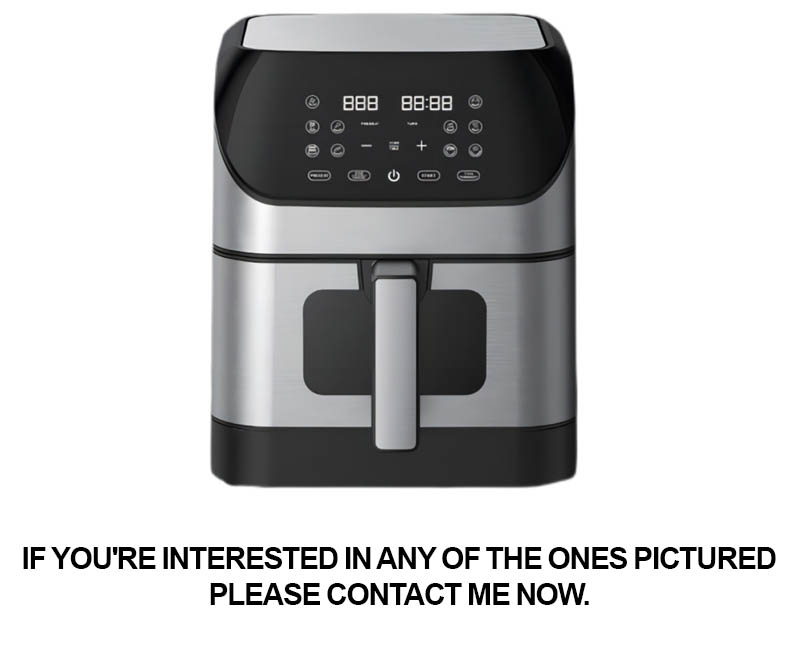Address
304 North Cardinal
St. Dorchester Center, MA 02124
Work Hours
Monday to Friday: 7AM - 7PM
Weekend: 10AM - 5PM
Address
304 North Cardinal
St. Dorchester Center, MA 02124
Work Hours
Monday to Friday: 7AM - 7PM
Weekend: 10AM - 5PM

Navigating the world of kitchen appliances, the air fryer has emerged as a game-changer, especially in the realm of healthy cooking. This article delves into the dynamic market of high capacity air fryer factories, shedding light on how these innovative kitchens are not just cooking up a storm but also achieving significant revenue milestones each month. We’ll explore the cutting-edge design innovations, market trends, consumer preferences, data-driven decision-making, efficient production techniques, distribution channels, sales strategies, and the crucial role of customer service and after-sales support in this burgeoning industry.
In the ever-evolving landscape of kitchen appliances, the high capacity air fryer has emerged as a beacon of innovation and efficiency. This nifty kitchen gadget has not only captured the imagination of health-conscious consumers but has also become a cornerstone in the modern kitchen. With its ability to fry with minimal oil, the high capacity air fryer has quickly become a favorite among those looking to enjoy their favorite fried foods without the guilt.
The market for high capacity air fryers has seen a significant surge in recent years, driven by a combination of factors. Firstly, there’s a growing awareness of health and wellness, with consumers increasingly seeking out cooking methods that are healthier alternatives to traditional frying. Secondly, technological advancements have made air fryers more efficient and capable, offering a wider range of cooking options. Lastly, the convenience factor cannot be overlooked; these appliances save time and effort while still delivering delicious results.
As the market has expanded, so has the need for high capacity air fryer factories to meet the demand. These factories are the backbone of the industry, responsible for producing the devices that end up in homes around the world. They have to balance the need for high production volume with the quality standards that consumers have come to expect.
In the realm of high capacity air fryers, capacity is king. These machines are designed to handle larger batches of food, making them ideal for families or those who enjoy hosting gatherings. The increased capacity doesn’t just mean more food; it also means more options. From fried chicken to vegetables, from breaded fish to potatoes, the high capacity air fryer can do it all with a fraction of the oil.
The design of these appliances is also a critical factor. Modern high capacity air fryers come with features like adjustable temperature controls, allowing users to achieve the perfect crispness on their favorite foods. Some models even come with preset programs for different types of cooking, making it as easy as pressing a button to cook a variety of dishes.
The market is also witnessing a shift towards energy efficiency. As consumers become more environmentally conscious, the demand for appliances that consume less energy has grown. High capacity air fryers that are energy-efficient not only save money on electricity bills but also contribute to a smaller carbon footprint.
When it comes to the market itself, there’s a lot of competition. Brands are constantly striving to differentiate themselves, offering unique features and designs that appeal to consumers. From sleek, modern aesthetics to smart technology that allows for remote monitoring and control, the high capacity air fryer market is a playground for innovation.
Moreover, the market is not just dominated by large corporations. There’s a growing number of small and medium-sized enterprises (SMEs) that are carving out their niche by focusing on quality and customer service. These factories often offer customized solutions, catering to specific market needs or even individual customer requests.
The rise of e-commerce has also had a significant impact on the high capacity air fryer market. Online sales platforms have opened up new channels for manufacturers to reach customers, and the convenience of online shopping has made it easier for consumers to find and purchase these appliances.
In conclusion, the high capacity air fryer market is a dynamic and rapidly growing sector within the kitchen appliance industry. It’s driven by consumer demand for healthier, more convenient, and efficient cooking solutions. As the market continues to evolve, so too will the role of high capacity air fryer factories in meeting these demands and shaping the future of kitchen technology.

In the bustling landscape of kitchen appliances, the high capacity air fryer factory stands as a cornerstone, playing a pivotal role in shaping the market. These factories are not just manufacturing hubs; they are the heartbeat of innovation and efficiency in the air fryer industry.
The essence of a high capacity air fryer factory lies in its ability to produce large volumes of air fryers with precision and quality. This scale of operation is crucial because it allows for economies of scale, reducing production costs and enabling the factory to offer competitive pricing. The sheer number of units produced also means that these factories can cater to a wide customer base, from individual consumers to large retail chains.
These factories are equipped with state-of-the-art technology, ensuring that each air fryer that rolls off the assembly line meets the highest standards of performance and safety. The integration of advanced machinery and automation streamlines the production process, minimizing the risk of errors and enhancing productivity. This focus on technology not only ensures quality but also allows for rapid adaptation to market demands and technological advancements.
Another critical role of these factories is in driving innovation. They are at the forefront of developing new features and designs that appeal to consumers. From eco-friendly materials to smart technology that allows for remote monitoring and control, these factories are the breeding ground for cutting-edge air fryers. This continuous innovation is what keeps the product fresh and relevant in a rapidly evolving market.
Quality control is a non-negotiable aspect of high capacity air fryer factories. With a large number of products being manufactured, ensuring each one meets stringent quality standards is paramount. These factories employ rigorous testing protocols to guarantee that every air fryer is free from defects and performs as advertised. This commitment to quality not only builds trust with customers but also reduces the cost of returns and repairs.
Supply chain management is another area where these factories excel. Efficient supply chain operations ensure that raw materials are sourced quickly and reliably, reducing lead times and maintaining inventory levels. A robust supply chain is essential for meeting production schedules and avoiding stockouts, which could lead to lost sales and customer dissatisfaction.
In terms of sustainability, high capacity air fryer factories are increasingly adopting green practices. This includes using energy-efficient machinery, recycling materials, and reducing waste. By doing so, these factories are not only contributing to a healthier planet but also appealing to a growing segment of consumers who prioritize environmental responsibility.
Furthermore, these factories often engage in research and development activities to explore new applications for air fryers. This might involve developing models that cater to specific dietary needs, such as low-fat or gluten-free options, or creating air fryers that are compatible with smart home systems. The R&D efforts of these factories are what keep the market dynamic and competitive.
Lastly, the role of a high capacity air fryer factory extends beyond the production floor. They are also instrumental in shaping industry standards and regulations. By participating in trade associations and standard-setting bodies, these factories help to ensure that the air fryer market operates fairly and safely.
In summary, the high capacity air fryer factory is a multifaceted entity that drives the industry forward. It is a hub of innovation, efficiency, quality control, and sustainability. Without these factories, the air fryer market would lack the dynamism and quality that consumers have come to expect.

In the competitive landscape of the kitchen appliance industry, hitting a monthly revenue milestone of 20k is no small feat. This figure represents a significant achievement for a high capacity air fryer factory, reflecting not just financial success but also strategic acumen and operational efficiency. Let’s delve into the factors that contribute to this milestone.
The first element to consider is the demand for high capacity air fryers. These appliances have seen a surge in popularity due to their ability to offer healthier, oil-free cooking options. A factory that can meet this demand with a high volume of production is inherently set up for success. The scale of operation is crucial; a factory that can churn out thousands of units monthly has a substantial market share.
Maintaining a consistent quality across all units is essential. The factory must ensure that each air fryer meets stringent quality control standards to avoid recalls or returns, which can severely impact revenue. This requires a robust quality assurance process, from the sourcing of materials to the final assembly and testing.
Pricing strategy plays a pivotal role in reaching the 20k/month revenue mark. The factory must find the sweet spot between affordability and profitability. This involves conducting market research to understand the price sensitivity of consumers and adjusting pricing accordingly. Offering competitive pricing without compromising on quality is a delicate balance that can lead to substantial sales.
Marketing and branding are also key components. A strong brand presence can attract customers and build trust. The factory invests in marketing campaigns that highlight the benefits of their high capacity air fryers, such as their efficiency, ease of use, and health benefits. Effective branding can elevate the perceived value of the product, leading to higher sales.
Distribution channels are critical in reaching the 20k/month revenue milestone. The factory must have a well-established network that includes online sales platforms, retail partnerships, and possibly direct-to-consumer sales. Each channel should be optimized to maximize sales potential. This might involve targeted promotions, exclusive deals, or strategic placement in stores.
Customer satisfaction is a non-negotiable factor. A factory that achieves 20k/month in revenue is likely to have a loyal customer base. Ensuring customer satisfaction means not only delivering a high-quality product but also providing excellent after-sales service. This includes prompt responses to inquiries, efficient handling of returns, and offering support for troubleshooting.
Supply chain management is another area where a high capacity air fryer factory must excel. Efficient supply chain operations ensure that the factory can produce and deliver products on time, reducing the risk of stockouts or delays. This efficiency can lead to increased sales as customers are more likely to purchase from a reliable source.
Financial management is also crucial. The factory must maintain a healthy cash flow to support its operations and investments. This involves careful budgeting, managing inventory levels, and planning for future expenses. A solid financial foundation allows the factory to invest in new technologies, expand its product line, or scale up operations as needed.
Innovation is a driving force behind the 20k/month revenue milestone. A factory that continuously improves its product offerings and introduces new features or models is more likely to retain and attract customers. This could mean developing air fryers with smart technology, additional cooking functions, or even customizable settings.
Lastly, the factory must be adaptable to market changes. Consumer preferences can shift rapidly, and the ability to pivot and respond to these changes is crucial. This might involve diversifying the product range, exploring new markets, or even rebranding to stay relevant.
Achieving a monthly revenue of 20k is a testament to the hard work, strategic planning, and dedication of a high capacity air fryer factory. It’s a result of a combination of factors, from quality and pricing to marketing and financial management, all working in harmony to drive sales and revenue.

In the ever-evolving world of kitchen appliances, the high capacity air fryer has emerged as a game-changer. These devices are not just a healthier alternative to deep-frying, but they also offer convenience and efficiency. The design of these air fryers has been a canvas for innovation, leading to features that cater to both the health-conscious consumer and the busy home chef.
The sleek and modern aesthetic of high capacity air fryers is one of the first things that catch the eye. These appliances are no longer just utilitarian; they are stylish additions to any kitchen. Their compact size, combined with a futuristic look, makes them a must-have for those who value both form and function.
One key innovation in high capacity air fryer design is the adjustable temperature control. This feature allows users to fine-tune the cooking temperature to perfection. Whether you’re preparing crispy French fries or tender chicken, the ability to adjust the heat means you can achieve the exact level of crispiness or doneness you desire.
Another innovation lies in the cooking technology itself. Many high capacity air fryers now come with a convection fan that circulates hot air around the food, ensuring even cooking and reducing the need for oil. This not only makes the food healthier but also cuts down on the cleanup time, as there’s less oil to deal with.
Smart technology has also made its way into high capacity air fryer design. Modern models often include digital displays and programmable settings. Users can set their desired cooking time and temperature, and some even have pre-programmed settings for a variety of foods. This means you can walk away and let the air fryer do its job, perfect for those days when you’re multitasking or simply want to relax.
One of the standout innovations is the inclusion of a dehydrating function. This allows users to dry out fruits and vegetables for use in snacks, baking, or as a healthy alternative to sugary treats. It’s a versatile feature that adds a whole new dimension to the capabilities of an air fryer.
Safety has also been a focus in the design of high capacity air fryers. Many models now come with features like automatic shut-off and cool-touch exteriors. These safety mechanisms ensure that the user can operate the appliance with peace of mind, even when the air fryer is in use.
In terms of capacity, high capacity air fryers have stepped up their game. They now offer larger baskets that can accommodate a family-sized portion or even allow you to cook multiple batches at once. This is particularly useful for those who entertain often or for families with growing appetites.
Designers have also paid attention to the ease of use. Modern air fryers come with non-stick interiors that make cleaning a breeze. The handles are often ergonomically designed for a comfortable grip, and the overall build quality is such that the appliances feel sturdy and reliable.
The exterior of high capacity air fryers is another area where innovation shines. Many brands are now offering air fryers in a range of colors and finishes, from classic black and white to bold reds and blues. This allows users to match their appliance to their kitchen decor, adding a touch of personal style to their culinary adventures.
Finally, the design of high capacity air fryers has embraced sustainability. Some models are now energy-efficient, using less power than traditional ovens or deep fryers. This not only saves on electricity bills but also contributes to a greener planet.
In summary, the design of high capacity air fryers has evolved to meet the demands of today’s consumers. From temperature control to smart technology, from safety features to eco-friendly design, these appliances are a testament to how innovation can transform everyday cooking into an enjoyable and health-conscious experience.

In recent years, the kitchen appliance market has seen a surge in demand for healthier cooking alternatives, and the high capacity air fryer has emerged as a standout product. These appliances have not only changed the way we cook but also shaped market trends and consumer preferences in several key areas.
The surge in popularity of air fryers has been fueled by a growing awareness of health and wellness. Consumers are increasingly seeking cooking methods that offer the taste and texture of fried foods without the guilt. This shift has led to a demand for high capacity air fryers that can cater to larger families or for those hosting gatherings.
One major trend is the integration of smart technology into kitchen appliances. High capacity air fryers are now equipped with features like digital displays, programmable settings, and connectivity to smartphones, allowing users to monitor and control their cooking remotely. This tech-savvy approach appeals to tech enthusiasts and those who value convenience.
Another trend is the focus on sustainability and eco-friendly designs. Consumers are more conscious of the environmental impact of their purchases, and high capacity air fryers that use less energy and are made from recyclable materials are gaining traction. Brands that can demonstrate a commitment to sustainability are likely to capture a significant market share.
Customization and personalization are also becoming key factors in consumer preferences. Air fryers are now available in various sizes, capacities, and colors, allowing consumers to choose a model that fits their specific needs and style. Some brands are even offering customizable cooking programs, enabling users to tailor their cooking experience to their taste preferences.
Health-conscious consumers are driving the demand for air fryers that can cook a wide range of foods, from vegetables to meats to desserts. This versatility is crucial, as it allows users to enjoy a diverse diet without compromising on flavor. The ability to air fry a variety of ingredients also aligns with the trend of “one pot” or “batch cooking,” where users can prepare multiple meals at once for convenience.
In terms of design, there’s a clear preference for sleek, modern aesthetics. Consumers are gravitating towards air fryers that blend seamlessly into their kitchen decor, rather than standing out as an eyesore. The rise of minimalist and industrial design styles has influenced the way air fryers are designed and marketed.
Safety features are also becoming a priority. Consumers are looking for air fryers that have automatic shut-off functions, non-toxic coatings, and cool-touch exteriors to prevent accidents. Brands that prioritize safety in their product design are likely to gain the trust of cautious buyers.
The rise of social media and online reviews has had a significant impact on market trends. Consumers are more likely to be influenced by what they see on platforms like Instagram and YouTube, where influencers and everyday users share their experiences with various air fryer models. Positive word-of-mouth and social proof play a crucial role in shaping consumer preferences.
Lastly, the convenience factor cannot be overstated. High capacity air fryers that offer features like rapid preheat, easy-to-clean interiors, and quiet operation are highly sought after. The ability to cook a variety of dishes with minimal effort and time has made air fryers a staple in many modern kitchens.
In conclusion, the market trends and consumer preferences in the high capacity air fryer sector are multifaceted, encompassing health, technology, sustainability, customization, and convenience. Understanding these trends is vital for manufacturers looking to stay competitive and meet the evolving needs of their customers.

In the fast-paced world of high capacity air fryer manufacturing, the ability to make informed decisions is paramount. Data-driven decision making has become a cornerstone in the industry, shaping strategies and outcomes with precision. Here’s a delve into how this approach is reshaping the landscape:
Understanding Consumer BehaviorConsumer preferences and trends are constantly evolving. By analyzing data on sales, customer feedback, and market research, factories can pinpoint what features and designs resonate with their target audience. This insight allows for the creation of products that not only meet current demands but also anticipate future needs.
Optimizing Production ProcessesData analytics can significantly improve production efficiency. By tracking the output, quality control, and time spent on each stage of production, factories can identify bottlenecks and streamline processes. This not only reduces costs but also ensures a consistent supply of high-quality air fryers.
Supply Chain ManagementEffective supply chain management is crucial for maintaining a steady flow of materials and finished products. Data-driven insights help in forecasting demand, managing inventory levels, and choosing the most cost-effective suppliers. This proactive approach minimizes risks and ensures that the factory can respond swiftly to market fluctuations.
Marketing and Sales StrategiesMarketing efforts are better targeted when driven by data. By analyzing customer data, factories can tailor their advertising campaigns, social media content, and promotional activities to reach the right audience with the right message. This targeted approach increases the return on investment and drives sales.
Cost Reduction and EfficiencyData analytics can uncover areas where costs can be cut without compromising quality. By analyzing energy consumption, raw material usage, and waste levels, factories can implement changes that lead to significant savings over time. This focus on efficiency can give a competitive edge in the market.
Product Development and InnovationInnovation is key to staying ahead in the air fryer market. Data-driven insights into consumer feedback and emerging technologies enable factories to develop new features and functionalities. This continuous innovation cycle ensures that the products remain fresh and appealing to consumers.
Quality ControlMaintaining high standards of quality is essential for customer satisfaction and brand reputation. Data-driven quality control measures can detect issues early in the production process, preventing defective products from reaching the market. This proactive approach ensures that each air fryer meets or exceeds customer expectations.
Global Market AnalysisUnderstanding the global market landscape is vital for a high capacity air fryer factory. Data on international sales, cultural preferences, and regulatory requirements allows for the adaptation of products to different markets. This localization strategy can open up new opportunities and expand the factory’s reach.
Predictive AnalyticsBy using predictive analytics, factories can forecast future market trends and consumer demands. This foresight is invaluable for planning production, marketing, and supply chain activities. It helps in avoiding overstocking or understocking scenarios and ensures that the factory is always ready to meet customer needs.
In conclusion, data-driven decision making is a powerful tool in the air fryer industry. It empowers factories to make informed choices that lead to increased efficiency, reduced costs, better customer satisfaction, and ultimately, higher revenue. By embracing this approach, high capacity air fryer factories can navigate the complex market landscape with confidence and success.

In the ever-evolving landscape of high capacity air fryer production, efficiency is not just a buzzword; it’s a critical factor for success. The manufacturing process has to be finely tuned to reduce waste, increase output, and maintain quality. Here’s a delve into the various techniques and strategies that contribute to efficient production:
Precision in Component SourcingEnsuring that every part used in the air fryer’s assembly is of the highest quality is non-negotiable. This involves meticulous selection of suppliers who provide components that meet the exact specifications required for the air fryer’s performance. The use of advanced materials that are durable and energy-efficient is paramount.
Automated Assembly LinesThe integration of automated systems has revolutionized the production process. These lines are designed to assemble the air fryers with precision, minimizing the risk of human error. Robots and conveyors handle tasks such as screwing, welding, and quality control checks, allowing for a high volume of units to be processed in a short amount of time.
Continuous Improvement in DesignRegularly updating the design of the air fryers can lead to significant efficiency gains. By incorporating feedback from consumers and testing for durability and performance, manufacturers can make iterative improvements. This might include redesigning components for easier assembly or streamlining the shape of the fryer to optimize space within the factory.
Energy EfficiencyEnergy consumption is a major cost in the production process. Factories that invest in energy-efficient machinery and processes can reduce their operational costs significantly. This could involve using LED lighting, upgrading to energy-saving equipment, and implementing smart systems that adjust power usage based on production needs.
Waste ReductionEfficient production is about reducing waste at every stage. This includes minimizing scrap materials during the cutting process, optimizing packaging to reduce excess materials, and ensuring that any defects are caught early in the line to prevent further waste.
Inventory ManagementKeeping inventory levels balanced is crucial. Overstocking leads to increased storage costs and potential obsolescence, while understocking can disrupt production. Implementing a Just-In-Time (JIT) inventory system ensures that components are delivered just as they are needed, reducing storage costs and lead times.
Employee Training and EngagementThe skill level of the workforce directly impacts production efficiency. Regular training sessions keep employees up-to-date with the latest assembly techniques and safety protocols. Moreover, engaging employees in continuous improvement initiatives fosters a culture of innovation and efficiency.
Quality Control SystemsImplementing a robust quality control system is essential to ensure that each air fryer meets the highest standards. This involves regular inspections, testing, and the use of statistical process control (SPC) to monitor and maintain consistent quality throughout the production process.
Supply Chain OptimizationStreamlining the supply chain can lead to significant efficiency gains. Collaborating closely with suppliers to ensure timely delivery of components, as well as coordinating with logistics providers for efficient transportation, helps to reduce lead times and buffer stocks.
Sustainability EffortsAs sustainability becomes more of a priority, manufacturers are looking for ways to reduce their environmental footprint. This could involve using renewable energy sources, recycling materials, and reducing packaging waste. These efforts not only contribute to the company’s image but also reduce long-term operational costs.
By focusing on these production techniques, a high capacity air fryer factory can achieve higher productivity, better cost management, and maintain a competitive edge in the market. Efficiency is not just a one-time fix but an ongoing commitment to improvement and innovation.

In the competitive landscape of the kitchen appliance industry, the choice of distribution channels and sales strategies can make or break a high capacity air fryer factory’s success. Navigating through the myriad of options requires a keen understanding of market dynamics and consumer behavior. Here’s a closer look at how these channels and strategies can impact a factory’s bottom line.
Understanding the Consumer JourneyShoppers today are more informed than ever, thanks to the internet and social media. They research products extensively before making a purchase. For a high capacity air fryer factory, it’s crucial to understand this journey. By analyzing consumer behavior, the factory can tailor its distribution and sales approaches to meet specific needs and preferences.
Direct-to-Consumer (DTC) SalesDirect-to-consumer sales allow factories to build a direct relationship with customers. This can be achieved through online marketplaces, the factory’s own e-commerce site, or pop-up shops. DTC sales provide valuable insights into customer feedback, which can be used to refine products and services. It also offers the opportunity to upsell and cross-sell related products, such as air fryer accessories.
Retail PartnershipsCollaborating with retail partners is another effective strategy. These can range from large department stores and home improvement centers to specialty kitchen appliance retailers. The key is to select partners that align with the brand’s image and cater to the target market. Retail partnerships often come with established customer bases and brand trust, which can boost sales and market penetration.
Wholesale ChannelsWholesale channels are essential for reaching a broader audience, including smaller retailers and international markets. A high capacity air fryer factory might offer bulk discounts to attract wholesalers. This approach requires careful management of inventory and supply chain logistics to ensure timely deliveries and prevent stockouts.
E-commerce and Online PlatformsE-commerce has become a cornerstone of modern retail. High capacity air fryer factories must have a strong online presence, leveraging platforms like Amazon, eBay, and Alibaba. These platforms not only provide access to a vast customer base but also offer valuable data on consumer preferences and buying habits. Optimizing product listings with high-quality images, detailed descriptions, and competitive pricing is crucial for online success.
Social Media MarketingSocial media is a powerful tool for brand building and customer engagement. A factory can use platforms like Instagram, Facebook, and TikTok to showcase the benefits of its air fryers, share customer testimonials, and create buzz around new product launches. Influencer partnerships can also help in reaching a wider audience and driving sales.
Trade Shows and ExposParticipating in trade shows and expos is an excellent way to showcase products to a targeted audience of retailers, distributors, and consumers. These events can lead to direct sales, partnerships, and valuable networking opportunities. A well-organized booth with interactive displays and knowledgeable staff can make a lasting impression.
Customer Service and SupportA factory’s commitment to customer service and support can significantly impact sales. Offering exceptional after-sales service, including troubleshooting guides, warranty information, and easy-to-reach customer support, can build trust and encourage repeat purchases. A satisfied customer is more likely to recommend the product to others.
Data-Driven Inventory ManagementEfficient distribution and sales strategies rely on accurate inventory management. Utilizing data analytics to predict demand, manage stock levels, and streamline logistics can prevent overstocking or stockouts. This ensures that the factory can meet customer needs while optimizing costs.
Collaborative Marketing EffortsCollaborating with other brands or complementary products can open up new sales channels. For example, a high capacity air fryer factory might partner with a healthy living brand to offer bundled deals or co-branded marketing campaigns. This can tap into new customer segments and create additional revenue streams.
In conclusion, the success of a high capacity air fryer factory in the market hinges on a well-thought-out distribution strategy and sales approach. By combining direct-to-consumer sales with retail partnerships, leveraging e-commerce and social media, and focusing on customer service and support, factories can create a robust sales network that drives growth and profitability.

In the competitive landscape of the air fryer market, customer satisfaction is paramount. Ensuring that customers not only purchase a high-quality product but also receive exceptional service and support is crucial for building a loyal customer base. Here’s how companies are focusing on customer service and after-sales support:
Tailored Support PackagesOffering a range of support packages can cater to different customer needs. From basic troubleshooting guides to comprehensive maintenance plans, these packages can provide peace of mind and ensure that customers can use their air fryers to their fullest potential.
Responsive Customer ServiceA dedicated customer service team is essential. They should be available through multiple channels, including phone, email, and live chat, to address inquiries and resolve issues promptly. The team should be well-trained to handle a variety of questions and situations, from product usage to warranty claims.
Educational ResourcesProviding educational resources such as video tutorials, FAQs, and user manuals can empower customers to use their air fryers effectively. These resources can help prevent common issues and encourage customers to experiment with new recipes, thereby increasing their satisfaction and brand loyalty.
Warranty and Repair ServicesA robust warranty program is a cornerstone of after-sales support. Clear terms and conditions should be provided, and the process for making a claim should be straightforward. Additionally, offering repair services or authorized service centers can ensure that customers can get their air fryers fixed quickly and efficiently.
Feedback LoopsCreating a feedback loop is vital for continuous improvement. Encouraging customers to provide feedback on their experience with the product and the service they receive can offer valuable insights into areas where the company can enhance its offerings. This can range from product design to customer service protocols.
Community EngagementEngaging with customers through social media and online forums can foster a sense of community. This can be done by sharing success stories, hosting live Q&A sessions, and providing tips and tricks. It also allows customers to connect with each other, sharing their experiences and recommendations.
Personalized CommunicationPersonalized communication can make a significant difference in customer satisfaction. Sending out personalized emails with updates on their product or offering exclusive discounts can make customers feel valued. This approach can turn one-time buyers into repeat customers.
Emergency SupportIn cases where an air fryer stops working, offering emergency support can be a lifesaver. This could include expedited repair services or even loaning out a replacement unit until the customer’s product is fixed. Such gestures can turn a negative experience into a positive one.
Sustainability and Environmentally Friendly PracticesSupporting customers with information on how to dispose of or recycle their air fryer at the end of its life can be a responsible approach. This not only aligns with environmental concerns but also reflects a company’s commitment to sustainability.
Follow-Up and RetentionAfter a customer has received their product and service, following up to ensure they are satisfied can be a powerful retention strategy. This could be in the form of a survey or a simple check-in email, showing that the company cares about their ongoing experience.
Training and Certification ProgramsFor professional users or those who plan to use the air fryer in a commercial setting, offering training and certification programs can be beneficial. This not only helps in proper usage but also educates customers on the latest features and best practices.
By focusing on these aspects, companies can ensure that their customers not only have a positive experience with their air fryers but also feel supported throughout the entire lifecycle of the product. This comprehensive approach to customer service and after-sales support can significantly impact customer loyalty and brand reputation in the competitive kitchen appliance market.

In reflecting on the journey of the high capacity air fryer industry, one cannot help but appreciate the evolution of this niche market. From the initial surge in popularity to the current state of innovation and consumer demand, the path has been marked by significant milestones. The air fryer, once a quirky kitchen gadget, has now become a staple in many homes, offering a healthier alternative to traditional frying methods. As we stand at the precipice of what could be another leap forward, it’s worth considering the journey thus far and the potential future directions.
The rise of the high capacity air fryer has been fueled by a combination of factors, including health consciousness, convenience, and technological advancements. Consumers are increasingly seeking out cooking methods that reduce oil usage and calories, making air frying an appealing choice. Moreover, the convenience of air fryers, which can cook a variety of foods with minimal preparation and cleanup, has made them a staple in busy households. Technological improvements have also played a crucial role, with newer models boasting features like programmable settings and adjustable temperature controls.
As the market has grown, so too has the competition. Brands are vying for market share by not only improving their product offerings but also by adopting innovative strategies to reach consumers. This includes leveraging social media, influencer partnerships, and targeted marketing campaigns to create brand awareness and drive sales. The ability to adapt to changing consumer preferences and market trends is key to staying relevant in this dynamic industry.
Innovation in the design of high capacity air fryers has been a game-changer. The introduction of features like larger capacities, rapid preheat capabilities, and multi-level racks has expanded the versatility of these appliances. Users can now cook a wider range of dishes, from crispy fries to succulent meats, all in one machine. The integration of smart technology, such as Wi-Fi connectivity and mobile app control, has also made air fryers more user-friendly and accessible.
Market trends and consumer preferences continue to shape the direction of the industry. The demand for healthier cooking options is on the rise, and manufacturers are responding by offering air fryers that can handle a variety of ingredients and cooking styles. Additionally, there’s a growing trend towards sustainability, with consumers increasingly interested in products that are eco-friendly and have a lower carbon footprint. This shift in consumer mindset is prompting manufacturers to explore more sustainable materials and energy-efficient designs.
Data-driven decision making has become a cornerstone of success in the air fryer industry. By analyzing consumer behavior, sales data, and market research, companies can make informed decisions about product development, marketing strategies, and inventory management. This approach allows for the creation of products that not only meet consumer needs but also anticipate future trends. For instance, data might indicate a surge in demand for air fryers with specific features, leading to targeted product improvements.
Efficient production techniques are essential for maintaining a competitive edge. The air fryer factory must balance quality control with high output to meet market demands. This often involves investing in advanced machinery and implementing lean manufacturing principles. Automation and robotics have streamlined the production process, reducing costs and lead times. Moreover, a focus on sustainability means that waste is minimized, and energy consumption is optimized.
Distribution channels and sales strategies are pivotal in getting products to the consumer. Direct-to-consumer sales through e-commerce platforms have become a popular route, offering convenience and a direct line of communication with customers. Retail partnerships are also key, with air fryers often found in kitchen appliance sections or specialty stores. Sales strategies include bundling air fryers with accessories, offering limited-time promotions, and creating educational content to highlight the health benefits and versatility of the product.
Customer service and after-sales support are the final touchpoints in the customer journey. A company’s reputation can be bolstered or tarnished based on how it handles customer inquiries and issues. Offering comprehensive support, including troubleshooting guides, warranty information, and easy-to-reach customer service teams, helps build trust and loyalty. Additionally, gathering feedback from customers can provide valuable insights for future product development and service improvements.
In conclusion, the high capacity air fryer market has come a long way from its humble beginnings. It’s a testament to the power of innovation, market responsiveness, and customer-centric approaches. As the industry continues to evolve, it’s clear that the future holds even more exciting possibilities. Whether it’s through further technological advancements, new marketing strategies, or an even deeper understanding of consumer needs, the high capacity air fryer is poised to remain a key player in the kitchen appliance landscape.